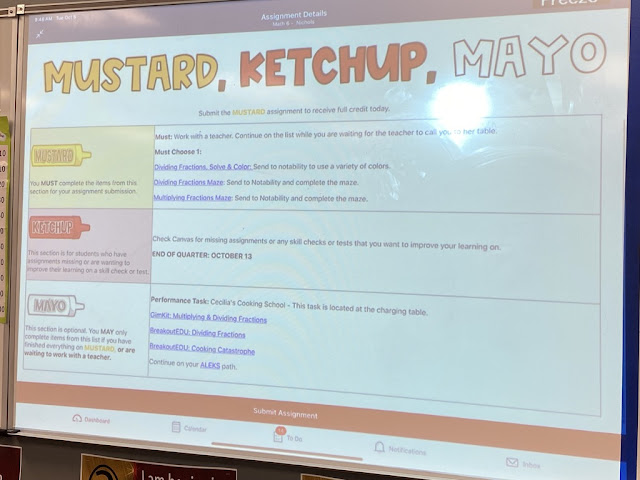There are countless ways to grow and improve. At the individual level, intrinsic motivation drives educators to actively seek opportunities that support their diverse learning interests and needs. Social media has played a considerable role in this area over the years, demonstrating the power of Personal Learning Networks (PLNs) with learning anytime, anywhere, and with anyone. Speaking from experience, I have significantly benefited from not only engaging in digital spaces but taking what I have learned and applying it to my practice, which I can readily show when asked or communicate through my blog. Being a lifelong learner in the digital age is quite empowering.
While PLNs have grown in popularity, the most popular form of professional learning embraced by schools and districts still consists of more traditional pathways, such as bringing in guest speakers, workshops, or holding annual events. The investment in these options makes sense as variables such as time and cost can be absorbed through various funding sources while ensuring the entire staff is receives the training. Professional development days, mostly packed into the beginning of the academic year, are still the preferred mode to support staff while adhering to specific mandates. Everyone should be asking: Do these current pathways actually lead to changes in practice at scale?
I have written in the past about the need to move from professional development (PD) to professional learning. Any investment made should lead to efficacy. While mandate-focused trainings do very little to inspire the masses, one-and-done and drive-by events likewise do very little to provide educators with strategies to effectively implement the ideas or show what they look like in practice. Inspiration packed into one day typically fades when reality sets in shortly after. Motivation does matter, and I am all for keynote speakers or conference-like events as long as there is an underlying plan to ensure educators get what they need to succeed throughout the year. This is what leads to change—not a single person or standalone PD day.
Efficacy is about showing the impact of investments made in professional learning. It can be broken down into two different categories: planning and implementation. To set the stage for efficacy, we need to be cognizant of the rationale for why a particular initiative or strategy is being invested in and how it will benefit learners through improved outcomes.
A solid professional learning plan is:
- Research-aligned
- Ongoing
- Job-embedded
A plan is only as good as its implementation. In Digital Leadership, I shared a strategic planning process that can help set the stage for impactful professional learning. The visual provides key guiding questions and essential elements to consider to help determine efficacy. Now the challenge and opportunity are to make it happen.
Effective implementation relies on:
- Continuous feedback
- Accountability for growth
- Evidence of impact
Coaching is a critical component as it provides continual support for teachers and administrators while addressing all the essential planning and implementation components. The key is to remember that coaching alone will not lead to sustainable and scalable change. That requires each school or district to build in their own feedback and accountability measures while curating evidence to show impact over time in relation to improved learner outcomes, both qualitative and quantitative.
Recently I have been involved in several ongoing projects where districts have not only made the pertinent investments but have also integrated the planning and implementation components. For example, I partnered with Jackson County School System in Georgia to work with all their school leaders over the summer on Disruptive Thinking in Our Classrooms. Over the course of the year, I am on-site in the role of coach to provide ongoing and job-embedded feedback to show efficacy. While I saw many amazing examples of innovative practices at scale, I was very impressed with East Jackson Elementary School. Through many classroom visits, I was able to see direct evidence of how the leadership team took personalized learning strategies that I presented over the summer, formulated a plan, and implemented them with fidelity. Below are a few examples.
The same can be said for the Juab School District in Utah. Well over a year ago, I facilitated a district-wide workshop on personalized learning, followed up with job-embedded coaching and targeted sessions. Recently I was back again, visiting classrooms to provide feedback. There was so much growth, and I can’t begin to explain how proud I am of these teachers and administrators. Below are a few highlights.
It is essential to understand the underlying principles of effective professional learning. Whether you are a teacher or administrator, you must advocate for supports that will help you succeed. I always advise schools and districts to poll their staff and then develop a comprehensive plan that will lead to efficacy, either internally or with external help. An outside lens can overcome internal bias and provide an honest assessment of where you truly are while guiding you to your desired destination. No matter the path chosen, the key is to get it right.







No comments:
Post a Comment